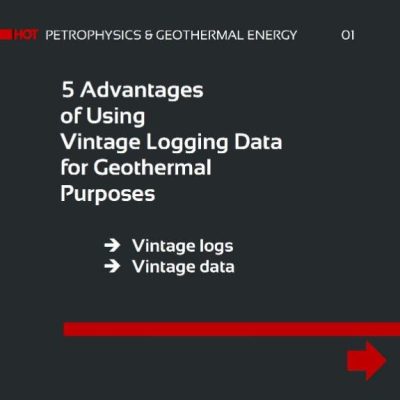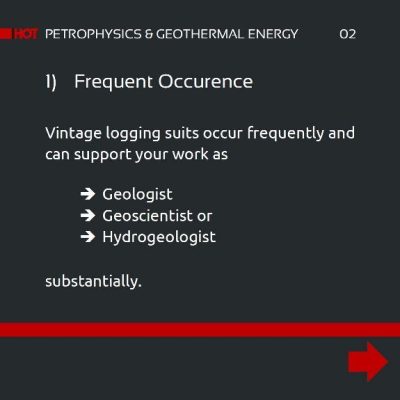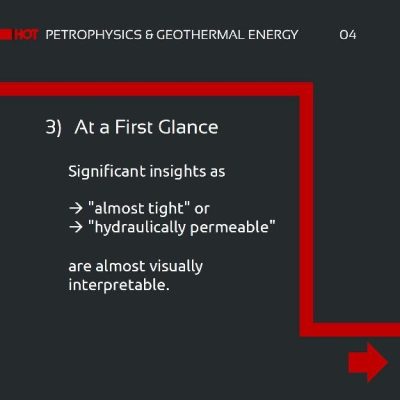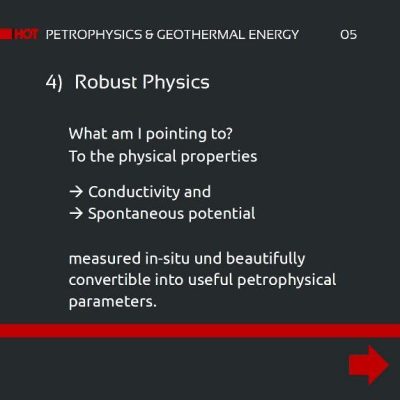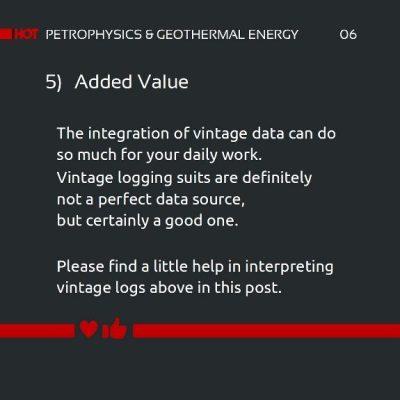5 Advantages of Using Vintage Logging Data for Geothermal Purposes
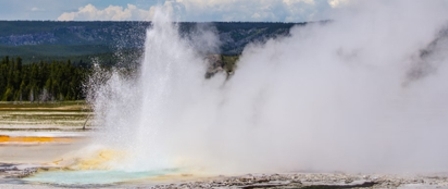
Vintage data can be the game changer in geothermal exploration and geothermal feasibility studies.
Vintage data does not necessarily show details of petrophysical properties of geothermal targets, yet they show the significant ones – hydraulically permeable intervals, for example.
While modern high-end logging tools capture a completely different level of information, vintage logs can be used to pre-select between the useful and the not-so-useful targets. And this makes them invaluable for geoscience work:
While knowing the salinity of both formation water and mud filtrate, keep an eye out for the ➡ SP log (spontaneous potential), it might be of good use. Hydraulically permeable intervals show a specific signature on the log. And tight or shaly intervals show another specific signature. How practical 😀.
The conductivity, commonly plotted as ➡ resistivity, has been logged since the beginning of wireline logging. Conductive is, what is also hydraulically permeable. This is, together with the SP, an unbeatable combo.
Interested in Petrophysics for Geothermal Applications?
Our course “Petrophysics for Geothermal Applications”, taught by the author of this article, provides a practical guide of how to use and interpret well logs measured in the vicinity of planned geothermal sites to reduce uncertainties when assessing the feasibility of geothermal energy utilisation.
About the Author

- Dr Claudia Steiner-Luckabauer is the Principal Petrophysicist and geothermal expert at the HOT Energy Group. She has been working in a leading role on numerous integrated reservoir characterisation and field development projects, focussing on integrated petrophysical evaluation and formation evaluation.
- As HOT’s subject matter expert, Claudia has extensive experience assessing mature oil fields, heavy oil fields, gas condensate fields, gas fields, underground gas storage, clastic and carbonate settings, low-salinity environments, unconsolidated reservoirs, and fractured reservoirs (chalk, carbonate, granite basement, sandstone). She is also an experienced instructor of academic and industry workshops on various topics in geosciences and has authored numerous papers.
HOT is your trusted partner for geothermal consulting services.
We support our customers in identifying locations of high-quality geothermal resources, in mitigating the risk of subsurface tremors associated with geothermal applications, and in designing and developing geothermal projects.
Talk with us to see how HOT can propel your geothermal project to success!

